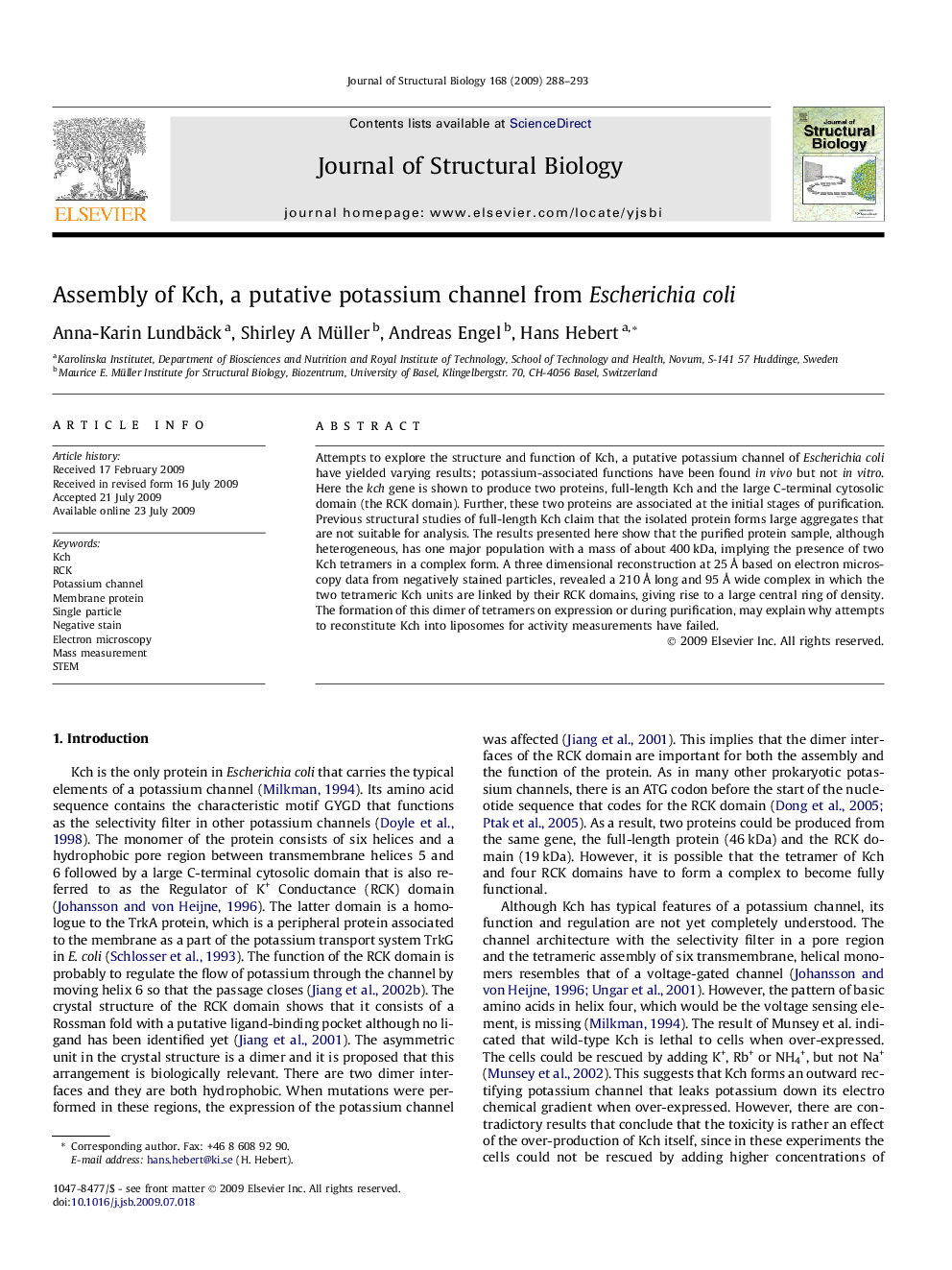| Article ID | Journal | Published Year | Pages | File Type |
|---|---|---|---|---|
| 5915087 | Journal of Structural Biology | 2009 | 6 Pages |
Attempts to explore the structure and function of Kch, a putative potassium channel of Escherichia coli have yielded varying results; potassium-associated functions have been found in vivo but not in vitro. Here the kch gene is shown to produce two proteins, full-length Kch and the large C-terminal cytosolic domain (the RCK domain). Further, these two proteins are associated at the initial stages of purification. Previous structural studies of full-length Kch claim that the isolated protein forms large aggregates that are not suitable for analysis. The results presented here show that the purified protein sample, although heterogeneous, has one major population with a mass of about 400Â kDa, implying the presence of two Kch tetramers in a complex form. A three dimensional reconstruction at 25Â Ã based on electron microscopy data from negatively stained particles, revealed a 210Â Ã long and 95Â Ã wide complex in which the two tetrameric Kch units are linked by their RCK domains, giving rise to a large central ring of density. The formation of this dimer of tetramers on expression or during purification, may explain why attempts to reconstitute Kch into liposomes for activity measurements have failed.
